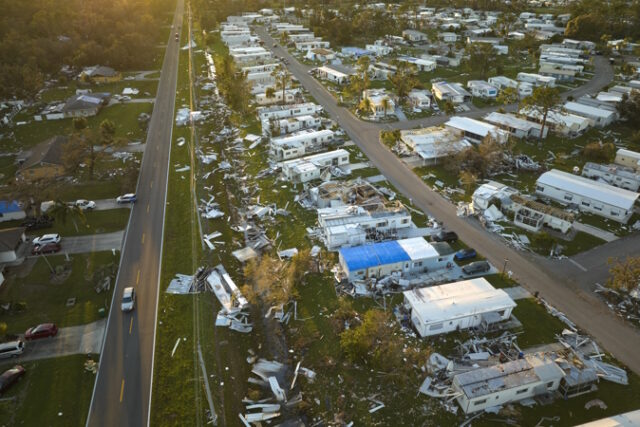
Florida homeowners understand that hurricanes bring damaging winds. These 100+ mph winds can be detrimental to your home when you’re not prepared. How often do Florida homeowners consider the integrity of their roofs before hurricane season?
The roof of your home protects everything inside from the elements. After a major hurricane, many roofs will need to be fixed because of the mediocre materials used. The good news is that you can prepare for the worst in advance.
When the time comes to replace your roof, consider using the best roofing material for high winds, tropical storms, and hurricanes. Other factors like the roof shape, pitch, overhang, and more will affect its durability in a hurricane. Contact a roofing company in Englewood, FL, for more information about the best hurricane roofing options.
High Wind Resistant Roofing Materials
If you’re watching the yearly coverage of hurricane season, you’ll likely see hurricane video footage of a roof being picked up and carried away by harsh winds. Your family or business may avoid this misfortune by using wind-resistant materials on your roof.
Metal Roofing
Metal roofs present the safest and most secure option against high winds. If you’re living in a hurricane-prone area like Florida, this often requires being prepared for high winds. A metal roof can withstand hurricane-force winds up to 160 mph, making it the most wind-resistant solution. Metal roofing systems are pricier than shingles, but they last longer and are more durable.
A Hurricane Proof Roof
The best practices for Florida hurricanes include more than just choosing the right roof. Installing hurricane straps and other roof reinforcements can help prolong your new roof.
When choosing your hurricane-resistant roof, consider the following:
- The shape of the roof because certain building shapes and roof designs are better at resisting high winds and hurricanes than others. The best roof shape for high winds will include multiple panels, such as a hip roof with slopes, to reduce wind loads.
- The pitch or slope of the roof will affect your roof’s ability to stay put in high winds. Slopes of 30 degrees tend to have the best resistance against lifting off during dangerous winds.
- Hurricane straps and fasteners made out of galvanized or stainless steel are designed to hold your roof onto your walls or house foundations in the case of strong winds causing uplift.
- The length of your roof overhang will determine if your roof suffers serious damage during upforce winds. Limit overhangs to less than 20 inches to reduce uplift.
- Pressure points in areas such as the ridge of a roof, corners, and eaves, are subject to higher wind pressures. These areas need extra attention when it comes to fastening them down in expectation of high winds.
- Points of entry should be considered weak areas that require extra reinforcement. Doors, windows, garage doors, and vents can all have extra protection available for hurricane season. Shutters or other strengthening features can be added to reduce wind flow through and uplift.
Living in Florida means you’ll have to weather the high winds of hurricane season. From the beginning of June until the end of November, you could be caught up in a massive hurricane so prepare for it now to make sure you have the best type of roof for hurricanes.












